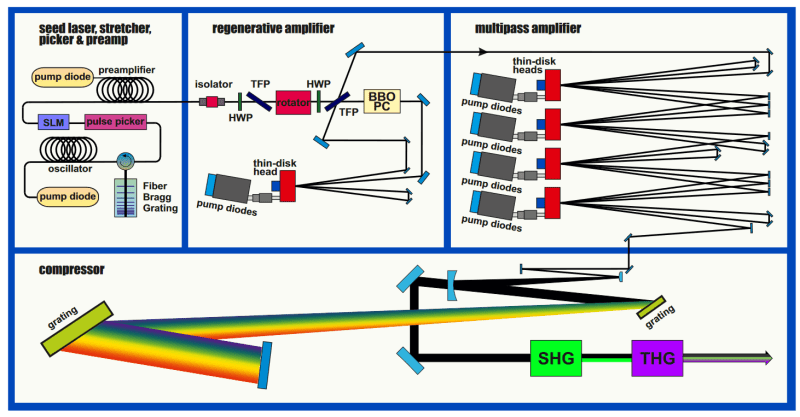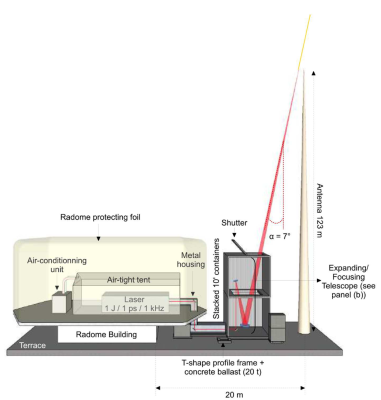
Most of us don’t spend that much time thinking about lightning. Every now and then we hear some miraculous news story about the man who just survived his fourth lightning strike, but aside from that lightning probably doesn’t play that large a role in your day-to-day life. Unless, that is, you work in aerospace, radio, or a surprisingly long list of other industries that have to deal with its devastating effects.
Humans have been trying to protect things from lightning since the mid-1700s, when Ben Franklin conducted his fabled kite experiment. He created the first lightning rod, an iron pole with a brass tip. He had speculated that the conductor would draw the charge out of thunderclouds, and he was correct. Since then, there haven’t exactly been leaps and bounds in the field of lightning rod design. They are still, essentially, a metal rods that attract lightning strikes and shunt the energy safely into the earth. Just as Ben Franklin first did in the 1700s, they are still installed on buildings today to protect from lightning and do a fine job of it. While this works great for most structures, like your house for example, there are certain situations where a tall metal pole just won’t cut it.
Passive Lightning Protection (and the Radioactive Option)
Sometimes, the thing you’re trying to protect is, well, a tall metal pole. Radio towers make excellent lightning rods, and it’s hard to guarantee that the clouds will choose to discharge their pent-up electrons on a nearby pole instead of the tower itself. The type of lightning protection used on a tower or antenna depends on the application — many Ham Radio operators use lightning arresters to protect their equipment. These are small boxes that act as a passthrough for the antenna feedline. They are directly grounded, and in the event lightning strikes the antenna, are designed to provide a quick path to the earth for all that extra charge.
Many of us have secondary systems in place as well — automatic antenna disconnects, for example — just in case some excess energy “leaks through” the arrester. All this is designed to protect the expensive equipment in the shack, not the antenna itself, which you would probably need to replace after a direct lightning strike. What if we wanted to prevent lightning strikes altogether?

Well, conventional lightning rods do help. A properly installed Lightning Protection System (LPS) can reduce the chance that an antenna or tower is struck by providing lots of enticing targets that the bolt can safely strike. Scientists have even tried to find ways to make those alternative targets a bit more alluring.
Back in the early 1900s, it was thought that slapping a bit of radioactive material on the top of the rod would help to attract lightning. The idea was that the radioactive material would partially ionize the surrounding air, making the area even more attractive. Several countries adopted their use in the 1970s and soon found that, in practice, this didn’t work as well as theory dictated. There was not a significant enough improvement over the conventional variety, especially considering the obvious health and safety complications that stray radioactive sources can cause. By 1990, many countries had banned their sale, and they have since been discontinued.
Radioactive or not, Lightning Protection Systems can get bulky. Take an airfield, for example. If we want to protect planes during takeoff and landing, we would need to cover a huge area with lightning rods and grounding lines… a huge area that becomes impassable to aircraft, for obvious reasons.
Lighting The Way
A recently-published paper just may be able to provide an alternative. It details the Laser Lightning Rod (LLR) project which aims to, as its name suggests, create lightning rods out of columns of light. Essentially, an extremely powerful laser is pointed at the sky, intersecting a conventional lightning rod along the way. The beam ionizes the air within it’s volume, creating a “wire” of sorts that guides lightning strikes into the lightning rod. The LLR team has proposed the system for use protecting buildings, rockets, and airports, and has even speculated that a series of lasers could be used around an airport to protect a large area (and the lasers could, of course, be selectively switched off when a plane approaches). The laser in question is a complex system, seeded by bursts from an emitter built by the TRUMPF corporation. The beam is amplified to around 800W, pulsing at 1kHz with each burst lasting around 1ps. The absolute maximum power of the system is not given, but Jean-Pierre Wolf, the team’s leader, told CNN that “a single pulse at peak power is equal to that produced by all the nuclear power plants in the world” — which sounds like it might be a slight exaggeration, but I wasn’t able to find an exact figure in the paper.


The team has built a prototype of the system, which they deployed at a communications tower on the peak of Säntis, the tallest mountain in the Swiss Alps. As can be expected, the tall metal structure at the peak of the tallest mountain in the region is no stranger to lightning strikes. In fact, in an average year it’s hit roughly 100 times.
The LLR team hauled a staggering 29 tons of materials and equipment to the mountaintop (sound a bit familiar? Check out this recent Hacker Challenge on Twitter). After about two weeks of setup and testing, the laser was ready to go. In mid-July, the first series of experiments started, and the team expects to have some numbers to crunch when the trials end sometime in September. In the meantime, they’re just hoping for some nasty weather.
High-powered lasers might be a bit overkill for the vast majority of today’s lightning-protection needs (unless you’re building the world’s safest amateur radio shack, have millions of dollars, and can convince your local government to let you shoot lasers at the sky) but this research is indisputably interesting. After all, is there anything that isn’t instantly cooler when you throw lasers into the mix? We’ve even seen laser headlights! As with many new technologies, we’ll be watching this one closely (with the proper laser safety eye protection, of course) and looking forward to the day when, rather than sounding like something out of a Weather Control Matrix in Star Trek, it becomes a viable and maybe even ubiquitous Lightning Protection System.
0 Commentaires